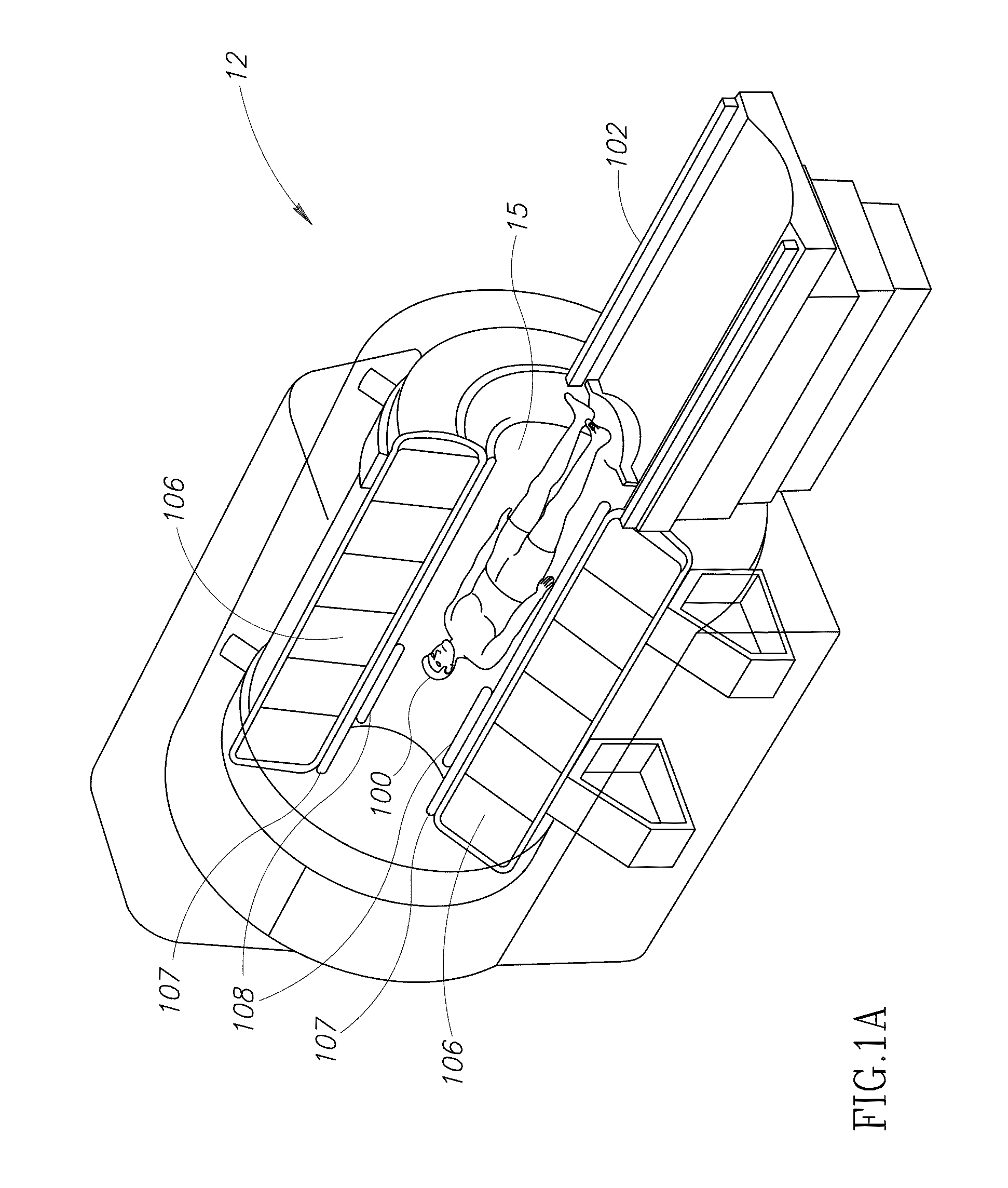Magnetic resonance imaging mediated radiofrequency ablation
radiofrequency ablation technology, applied in the field of radiofrequency ablation using a magnetic resonance imaging scanner, can solve the problems of poor image quality, limited utility of us to monitor treatment, and irreversible thermal damag
- Summary
- Abstract
- Description
- Claims
- Application Information
AI Technical Summary
Benefits of technology
Problems solved by technology
Method used
Image
Examples
examples
I. Simulations
[0057]In order to better understand the safety and performance issues related to the proposed invention, we simulated the operation of an MR-driven RFA device in the body RF coil of a 1.5 T MRI scanner. The simulation was carried out using the Remcom, Inc. (State College, Pa., USA) XFDTD 7.0 (XF7) 3D electromagnetic simulation software package, which is based on the FDTD (finite difference time domain) method. The modeled body coil had dimensions of 60 cm long and 60 cm diameter, and was a 16 rung highpass birdcage coil. It was first tuned to 1.5 T so that the field within the center of the body coil was homogenous. Then, its performance with a rectangular solid (box phantom) 7 cm tall, 31 cm long, 23 cm wide, with the electrical properties of liver tissue (dielectric constant 70.62, conductivity 0.55 S / m) placed at the isocenter was recorded as a reference. Finally, the RFA device, modeled as a simple wire which captures RF energy from the body coil by electromagnetic...
PUM
 Login to View More
Login to View More Abstract
Description
Claims
Application Information
 Login to View More
Login to View More - R&D
- Intellectual Property
- Life Sciences
- Materials
- Tech Scout
- Unparalleled Data Quality
- Higher Quality Content
- 60% Fewer Hallucinations
Browse by: Latest US Patents, China's latest patents, Technical Efficacy Thesaurus, Application Domain, Technology Topic, Popular Technical Reports.
© 2025 PatSnap. All rights reserved.Legal|Privacy policy|Modern Slavery Act Transparency Statement|Sitemap|About US| Contact US: help@patsnap.com



